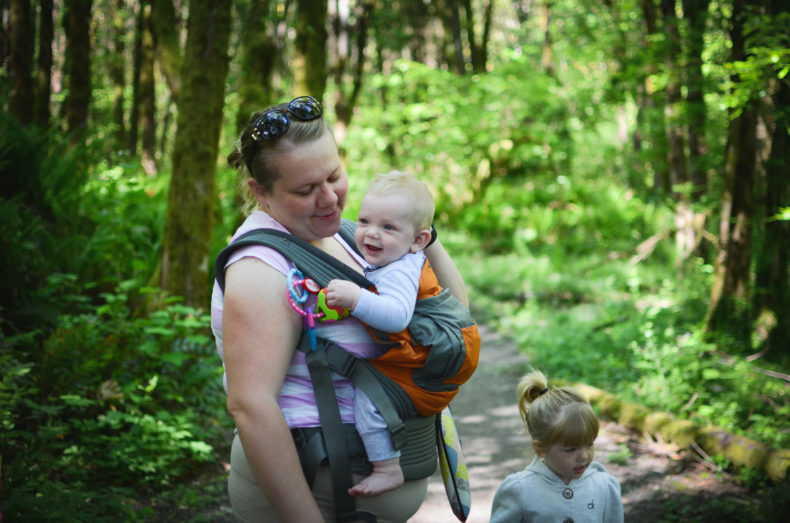Swinging into summer: 7 tips for having a positive impact on nature
The days are long, the nights move along quickly, and so many trails are open and passable. Hooray for summer. With summer comes so many wonderful things but it also means kids are out of school so the parks and trails are more crowded than before.
As you head out there post 4th of July weekend, make sure you are thinking about your impact on the trails and open spaces around you. One of the things Hike it Baby is working toward in 2017 is having a positive impact on nature, in spite of our sometimes large groups that move through. We are doing this by asking all of you, our beautiful friends who are participating in Hike it Baby, to think about your personal impact on trail. Photo credit: Yanna Bennett
Here’s a quick list of things to consider when out and about:
Photo credit: Yanna Bennett
Here’s a quick list of things to consider when out and about:
 Photo credit: Yanna Bennett
Here’s a quick list of things to consider when out and about:
Photo credit: Yanna Bennett
Here’s a quick list of things to consider when out and about:
- Adjust your group size: If you have a large group, break it up into two groups and stagger out your start or go opposite directions.
- Pack it in and pack it out. Diapers take up a lot of space in a park trash. While our hard earned tax dollars go toward parks, the more we can help keep the parks budgets down the better. Think about a group of 12 all depositing diapers in a park trash. That’s a lot of extra trash.
- Try to keep toddler tornadoes to a minimum. It’s hard to tell a toddler not to pull flowers and leaves, but do your best to encourage alternative play like picking up sticks and rocks.
- Be aware of others. If you have a large group make sure you move to the side so bikers and runners can pass easily.
- Let the park know you are coming! They often have camps and groups scheduled to come in, so one big Hike it Baby hike can definitely add some strain if it’s a busy park day.
- Spread the love! Encourage solo parent hikers to join the group or offer a hand if you see them struggling on trail with a toddler.
- Park responsibly. Don’t park illegally just because the lot further out is a pain to get to. We are Hike it Baby, so we hike, even if it means you add an extra 10 minutes to just get to the hike.
Related Content




Comments